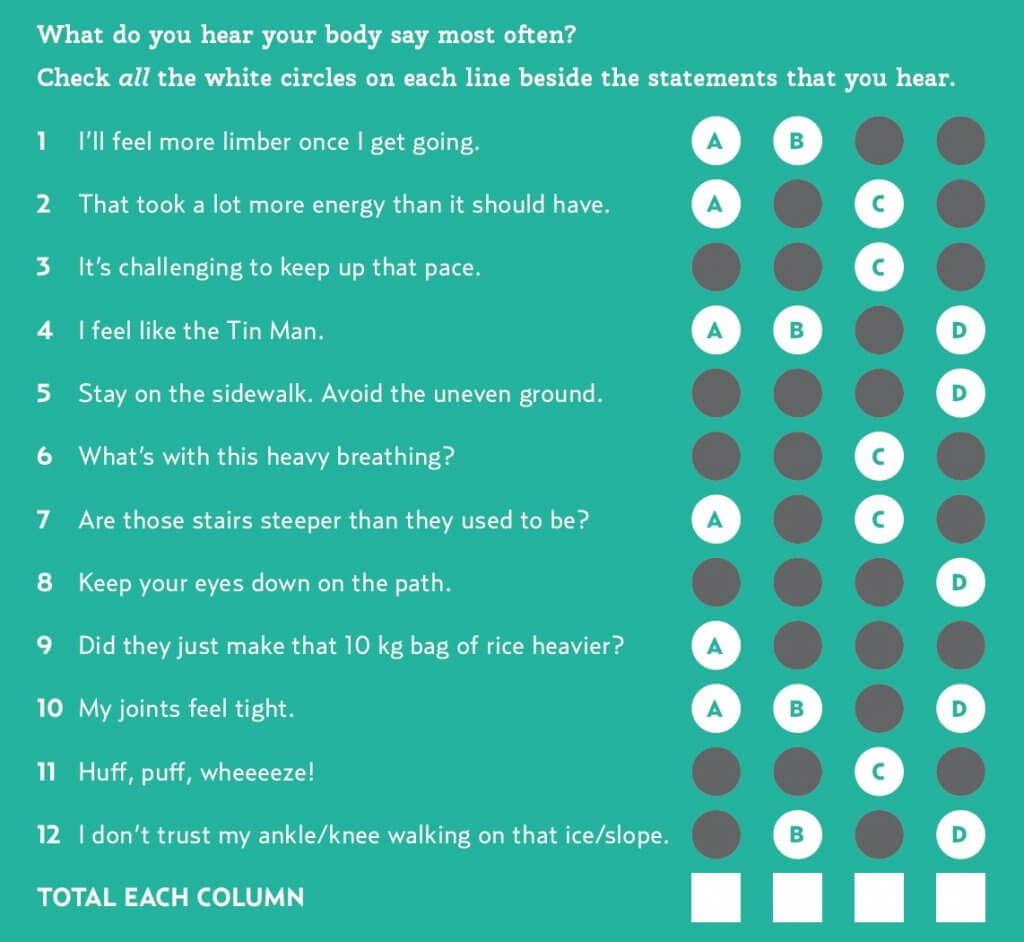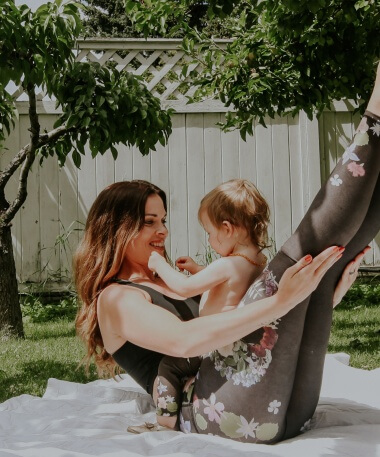Every New Year offers a fresh opportunity to revamp your fitness regime. But do you know what kind of workout or activity to choose to give your body the biggest payoff for your efforts?
What if you were able to decipher exactly what your body needs to feel more confident, make your day-to-day activities easier, and keep you doing the sports and hobbies you love?
You can. Your body has been telling you exactly what it wants.
Take this quiz to find out which key area of fitness you should be homing in on.
Note: If current or past injuries limit any key areas of fitness, see your physiotherapist or health care practitioner for assessment and specific exercise ideas for you.
Keep new fitness routines simple. By focusing on what your body is asking for, you will reap the biggest rewards and keep motivation high.
Take this quiz to find out what type of movement your body is asking for.

Mostly “A” responses
Target: Strength
Strength loss shows up insidiously—you might notice a gradual loss in your lifting confidence, a slower walking pace, or you have started to reconsider activities that require strength such as skiing or heavier gardening.
Sacropenia, or age-related muscle loss, shockingly begins in your late 20s and early 30s and accelerates after you turn 50. The good news is that it doesn’t take much to maintain and build strength.
What to do: Select 8 to 10 multi-joint exercises and perform 8 to 12 repetitions of each for 2 to 3 circuits. Repeat three times per week. Utilize resistance bands, your own body weight, dumbbells, kettle bells, or even a backpack with books in it.
Mostly “B” responses
Target: Mobility & Flexibility
Easy, fluid movement requires a coordinated give-and-take between groups of muscles contracting across your joints (mobility) and lengthening through the muscle (flexibility).
Stretching is one of the essential components that improves mobility and flexibility, but if you are always stiff and stretching just doesn’t seem to cut it, there might be other issues. 1. The muscle group might actually be on guard because it’s weak. Strengthen it up. 2. You might be overstretching and the muscle is tightening to protect itself. Shorten your range to test.
What to do: Choose activities such as pilates, yoga, tai chi, and dance. For general stretching, The American College of Sports Medicine recommends static stretching at least 2 to 3 days per week after an active warmup. Hold each stretch for 15 to 30 seconds and perform 2 to 4 times.
Mostly “C” responses
Target: Aerobic Fitness
Good aerobic fitness is required for endurance, whether you are hiking trails with a friend or preparing to snatch the match-winning point in tennis.
The biggest mistake people make when starting cardio-based programs is that they start too intensely or they choose an activity that doesn’t resonate with them and it is not enjoyable.
How to do it: Mix it up, have fun—take a brisk walk with your partner, go cross-country skiing, or do an online dance session at home. Start where you can and build from there.
Canadian Physical Activity Guidelines recommends targeting moderate to vigorous aerobic activity for an accumulation of 30 to 60 minutes per day (minimum 10 minute bouts each) to total 150 minutes per week.
Mostly “D” responses
Target: Balance & Stability
Balance and stability require trust between your brain and body. Your brain will not allow your body to perform at its best if it doesn’t trust it. Luckily, balance and stability are very trainable—it just takes intention.
What to do: Purposefully challenge your balance and stability daily. Choose the uneven dirt path versus flat sidewalk, or walk barefoot in your house instead of in shoes. Practice standing on a BOSU or a folded yoga mat. Select balance activities like paddle boarding or yoga.
TAMMY UYEDA, BSc(PT) is a clinical Physiotherapist, certified group fitness instructor and owner of FitSpark Health. She is passionate about motivating and inspiring people to an active lifestyle and can usually be found shuttling her three pre-teen and teenaged sons between soccer fields. She shares workouts, exercise tips, and her favourite fitness-related finds on her Instagram page @tinkam
Article was published in The Good Life magazine.




